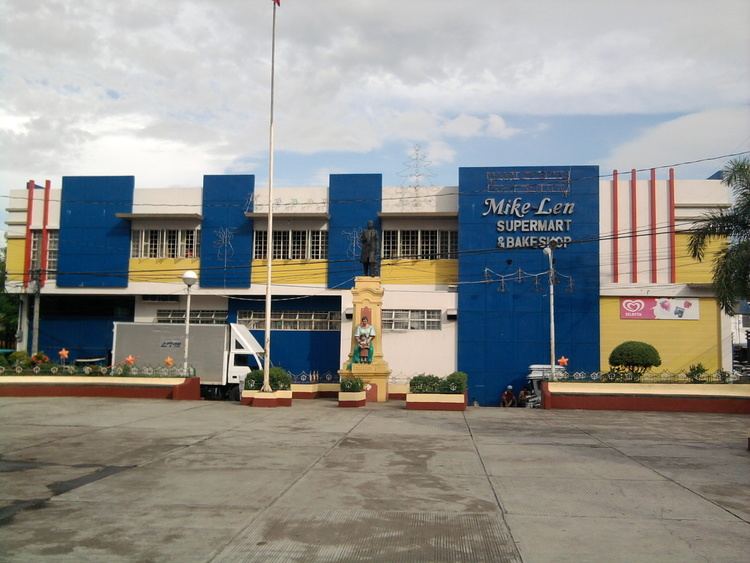Country Philippines Founded 1587 Time zone PST (UTC+8) Province Bataan | District 1st District Barangays Area 79.72 km² Local time Wednesday 5:00 AM | |
 | ||
Region Central Luzon (Region III) Weather 24°C, Wind NE at 10 km/h, 81% Humidity University Bataan Peninsula State University Neighborhoods Omboy, Mabatang, Gabon, Calaylayan, Wawa, Sitio Gomez, Salian, Laon, Bangkal | ||
Gulf fuel station in abucay bataan
Abucay, officially the Municipality of Abucay (Filipino: Bayan ng Abucay; Kapampangan: Balen ning Abucay), is a municipality in the province of Bataan in the Central Luzon (Region III) of the Philippines. The population was 39,880 at the 2015 census. In the 2016 electoral roll, it had 25,318 registered voters.
Contents
- Gulf fuel station in abucay bataan
- Map of Abucay Bataan Philippines
- Etymology
- History
- Geography
- Barangays
- Demographics
- Economy
- Government
- Education
- Infrastructure
- Attractions
- References
Map of Abucay, Bataan, Philippines
The mainly agricultural and fishing town is situated on the northeastern portion of the Bataan Peninsula, along Manila Bay, with a total land area of 79.72 square kilometres (30.78 sq mi). It is 116 kilometres (72 mi) from Manila, accessible via the Bataan Provincial Expressway, off Exit 25, or the parallel National Road in Bataan. Its westernmost elevated section is located within the Bataan National Park.
Etymology
Abucay originated from abu-kinaykay meaning "digging the ashes or fire debris". A Spaniard arrived in the town amid a big fire that destroyed properties. The natives were busy digging the debris with shovel ("kinaykay").
History
The first printing press in the Archipelago was found in this town. Tomas Pinpin, the first Filipino printer, learned the art from Fray Francisco Blanca de San Jose and Juan de Vera, a Chinese printer at the University of Santo Tomas.
On June 23, 1647, a fierce battle was fought between the Dutch invaders and the Pampango defenders in the near the Abucay church area. Nearly 200 Pampangos were put to death and 40 others together with Pampanga’s Spanish alcalde mayor (town mayor) Antonio de Cabrera together with Dominican priests Father Geronimo Sotomayor and Father Tomas Ramos were taken to Batavia.
Geography
Abucay is located at 14°44′N 120°32′E, in the north-eastern section of the Bataan peninsula.
According to the Philippine Statistics Authority, the municipality has a land area of 79.72 square kilometres (30.78 sq mi) constituting 7000580990000000000♠5.81% of the 1,372.98-square-kilometre- (530.11 sq mi) total area of Bataan.
Topography of Abucay varies from the mountainous terrain of Mount Natib caldera in the west to the coastal areas of the province along the shore of Manila Bay. Six rivers with a combined length of 37 kilometres (23 mi) originate from the mountain flowing in the west-to-east direction.
Secondary forests cover the western mountainous portion which is nearly 38% of Abucay's land area.
Barangays
Abucay is politically subdivided into 9 barangays.
Demographics
In the 2015 census, Abucay had a population of 39,880. The population density was 500 inhabitants per square kilometre (1,300/sq mi).
In the 2016 electoral roll, it had 25,318 registered voters.
Most of the people of Abucay speak the Tagalog language. Kapampangans who speak a different dialect of the Kapampangan language abound in Barangay Mabatang.
Economy
Abucay is basically an agricultural and fishing town. Besides Manila Bay, existing fishponds cover an area of 1,521 hectares (3,760 acres) of which 319 hectares (790 acres) are under intensive use while the rest are non-functioning but available for utilization. These fishponds are rich with commercial species like milkfish, tilapia, pla-pla and shrimps.
Agricultural lands in Abucay produces rice, corn, root crops, legumes, vegetable and various kinds of fruits as well as forest-grown bamboo and buho. Most of the walis tambo (local brooms) sold in Baguio City come from Abucay.
Government
The political seat of the municipal government is located at the Municipal Hall (also called Town Hall). During the Spanish colonial period, the Gobernadorcillo was the chief executive who held office at the town hall, then called the Presidencia.
During the American period from 1898–1946, the elected Mayor and local officials, including the appointed ones hold office at the Municipal Town Hall. The executive and legislative departments perform their functions at the Sangguniang Bayan (Session Hall) and Municipal Trial Court, respectively, which are located at the Municipal Hall.
Abucay's incumbent elected officials are Mayor Ana D. Santiago (NPC) and Vice Mayor Ma. Khristine G. Dela Fuente (Lakas-Kampi-CMD). The eight (8) Sangguniang Bayan members led by the Vice-Mayor hold office at the Abucay Sangguniang Bayan Session Hall.
Education
Infrastructure
Electric power for Abucay is served by the Peninsula Electric Cooperative (PENELCO).
A 10-hectare (25-acre) sanitary landfill in Sitio Macao in Barangay Capitangan is the first of its kind in the province of Bataan.
Attractions
One of the oldest in the Philippines, the first Abucay Church was established in 1587 and was administered by the Dominicans in 1588. The present church was built sometime in the early 1600s, the exact year is still unknown. The Church was badly damaged by the earthquake of September 16, 1852 and again by a fire in 1870. Father Jose Diego Pelaez rebuilt the church.
The church still houses the bells donated in 1839 and 1859. The five bells of the Abucay Church were restored on January 17, 1978 by U.S. Naval Base Facility in Subic Bay, Zambales province according to a historical marker in the church.
The Parish of Saint Dominic de Guzman has a population of 19,501 Catholics. Its patron saint is Saint Dominic de Guzman and the town's feast day is August 8. The present parish priest is Msgr. Victor C. Ocampo succeeding Father Antonio Quintos in 2011. The church belongs to the Roman Catholic Diocese of Balanga under the Vicariate of Saint Dominic de Guzman.
Landmarks include the following:
